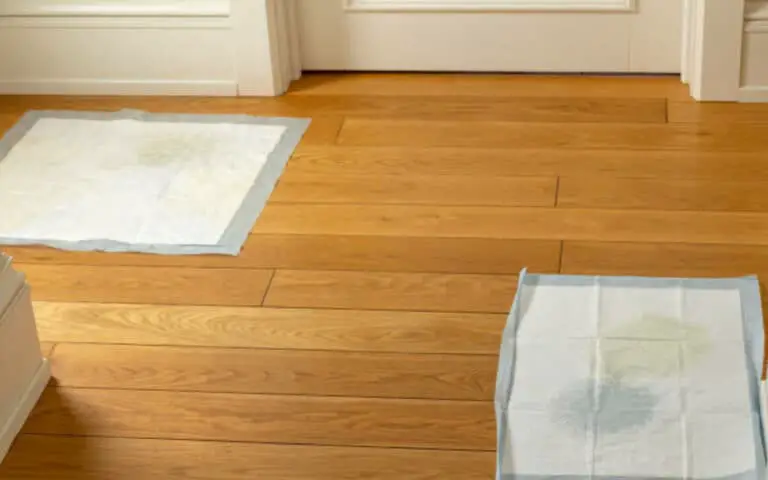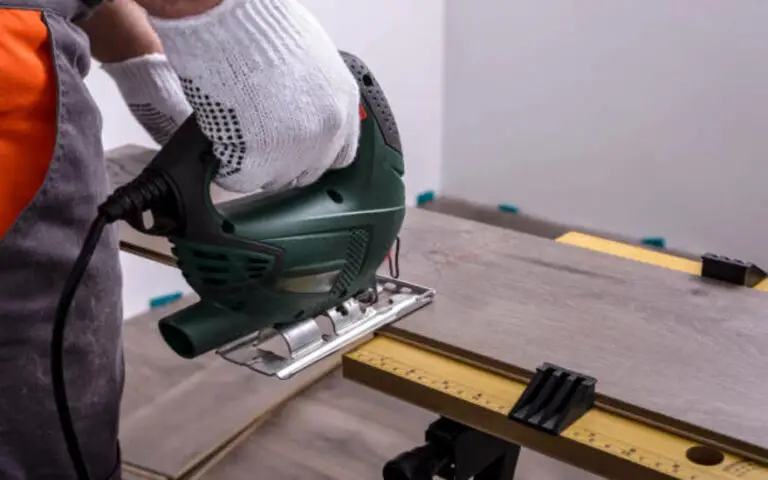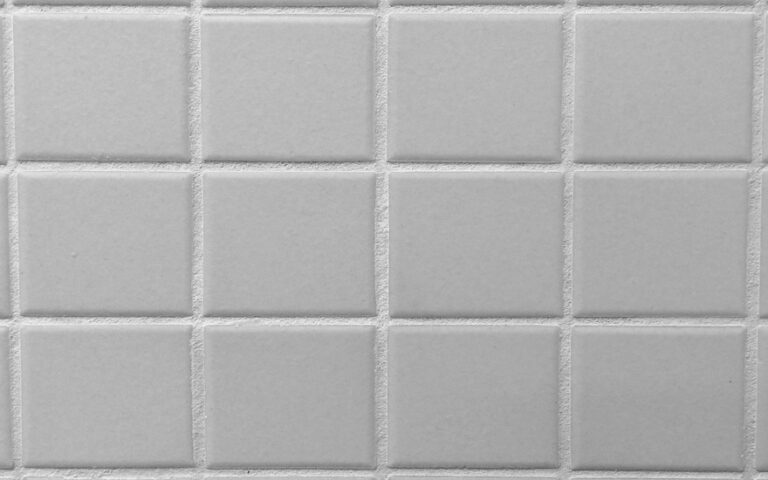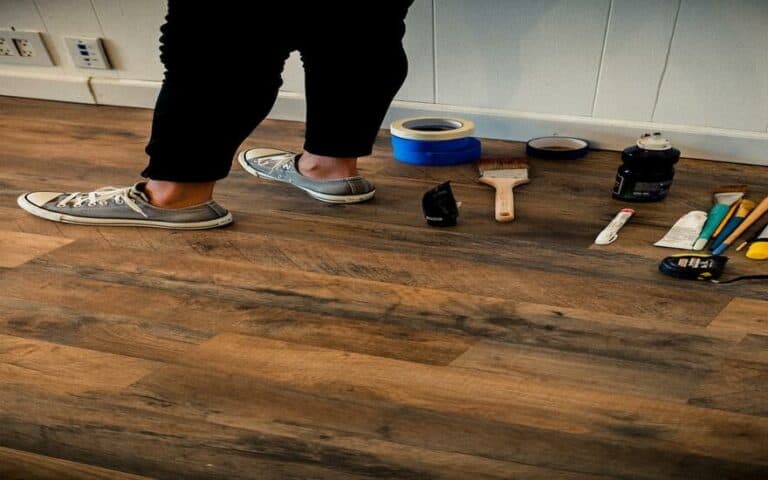This blog post will look at whether you can replace the bathroom floor without removing vanity. I’ll discuss the pros and cons of doing so and provide a step-by-step guide to replacing the floor without needing to remove the vanity.
Additionally, I’ll provide some helpful tips and tricks for the job and discuss how to troubleshoot any common problems that may arise.
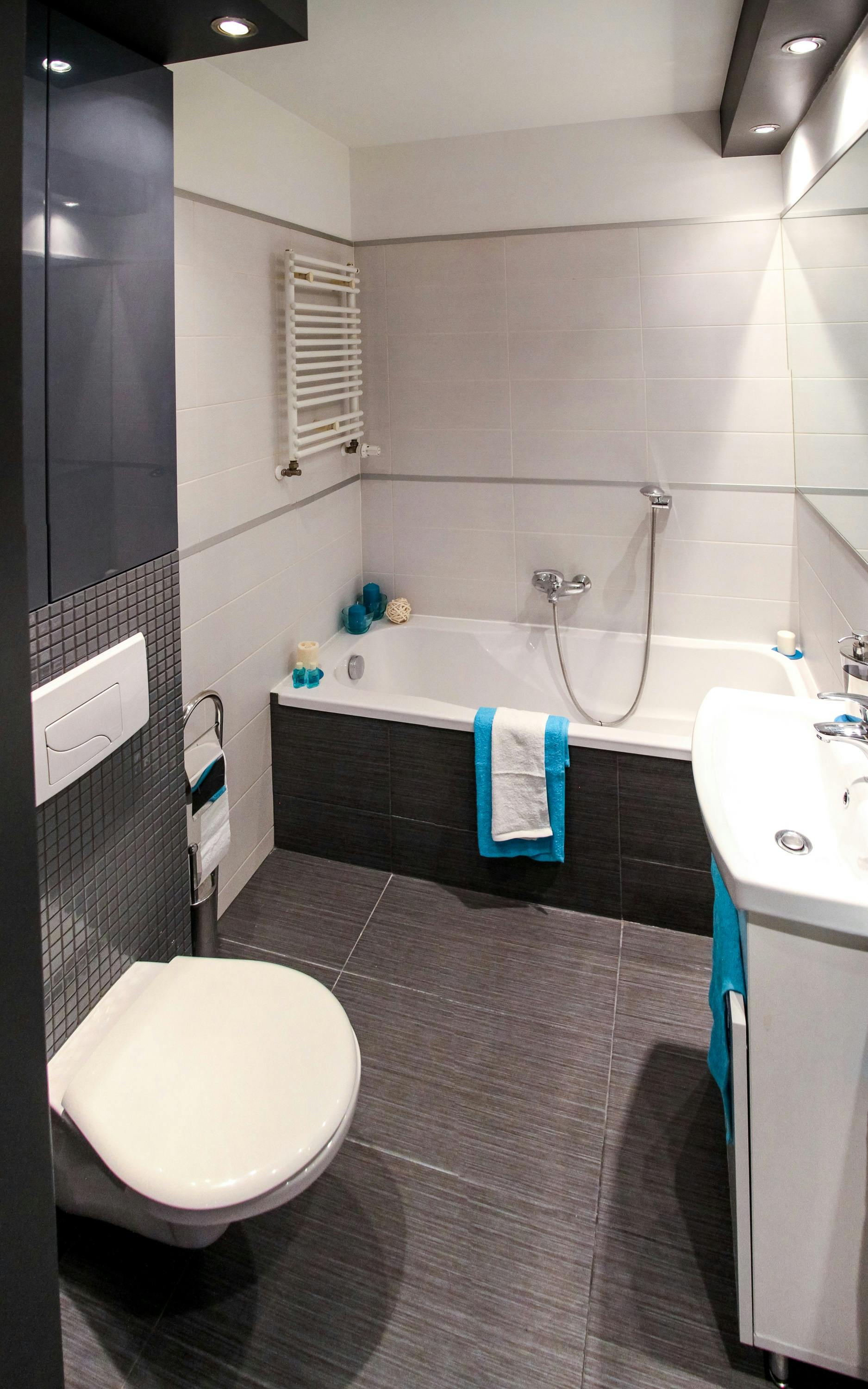
Is it possible to replace the bathroom floor without removing the vanity?
It is possible to replace the bathroom floor without removing the vanity, but it is not always the best option. If the vanity is old or damaged, tiling underneath it can make it easier to replace in the future.
If you choose to replace the floor without removing the vanity, it is important to ensure the floor is level and prevent any water leaks. Additionally, if there are any cut tiles, it is best to remove them and install new tiles for a better look.
One of the most important things to consider is the type of flooring that you are using. Most types of flooring can be installed without removing the vanity as long as the vanity is securely affixed to the subfloor.
Additionally, the vanity’s size should be considered, as a more oversized vanity will require more effort to move and reinstall after the new flooring has been implemented.
Another factor to consider is the age of vanity. If the vanity is very old, it may be necessary to remove it to access the subfloor, as it may be in poor condition and unable to support the new flooring. Additionally, if there is any water damage or mold present, it will be necessary to remove the vanity to address these issues before installing new flooring.
Pros and cons of replacing bathroom floor without removing vanity
While there are certain benefits to replacing the bathroom floor without removing the vanity, it’s also important to be aware of the potential drawbacks. Here are some of the pros and cons of taking this route.
Pros:
It’s generally faster and easier to install flooring without removing the vanity. – It’s possible to save time and money by avoiding the need to remove, reinstall, and replace the vanity. – It’s easier to access the subfloor for repairs or other work if the vanity is not removed.
Cons:
Some types of flooring may require the vanity to be removed and installed correctly. – If the vanity is old or in poor condition, it may need to be removed to access the subfloor. – It can be difficult to properly seal the seams between the new flooring and the vanity, which could result in water damage or other issues.
A step-by-step guide to replacing bathroom floor without removing the vanity
If you’ve decided to replace your bathroom floor without removing the vanity, here’s a step-by-step guide to help you get the job done.
- Prep the area: Before you start, clear the area of any furniture or other items, and ensure that the vanity is properly secured to the subfloor.
- Prepare the subfloor: If there are any issues with the subfloor, such as water damage or mold, make sure to address them before moving on to the next step.
- Measure and cut the flooring: Measure the area that you’ll be covering and cut the flooring to fit.
- Install the flooring: Use a level to ensure that the flooring is properly installed and sealed at the seams.
- Install the trim: Install the trim around the room’s edges to give it a finished look.
- Clean up: Vacuum and mop the area to ensure the flooring is properly cleaned and ready for use.
Tips and tricks for replacing bathroom floor without removing the vanity
When replacing the bathroom floor without removing the vanity, there are a few tips and tricks that can help make the job easier and ensure that the new flooring is installed correctly. Here are some of the most helpful ones.
- Wear protective gear, such as gloves and safety glasses, when cutting and installing the flooring to help protect yourself from any potential hazards.
- Use a level to ensure that the flooring is installed correctly and check for any areas that need to be adjusted.
- Use the proper adhesives and sealants to ensure the flooring is properly secured and sealed.
- Take your time and pay attention to the details. This will help to ensure that the flooring is installed correctly and looks its best.
Troubleshooting common problems
When replacing the bathroom floor without removing the vanity, a few common problems may arise. Here are some of the most common issues and how to troubleshoot them.
- Seams not adequately sealed: If the seams between the flooring and the vanity are not properly sealed, there is a risk of water damage or other issues. Use the proper sealants and adhesives to ensure the seams are properly sealed.
- Flooring not level: If the flooring is not level, it can cause it to look uneven and unattractive. Use a level to ensure that the flooring is installed correctly and leveled.
- Flooring not properly adhered: If the flooring is not correctly adhered to the subfloor, it can cause it to come loose or buckle. Use the proper adhesives and sealants to ensure that the flooring properly adheres.
Conclusion
Replacing the bathroom floor without removing the vanity is a great way to save time and money for home renovations. However, it’s essential to consider the type of flooring, the size and age of the vanity, and any potential issues that may arise before deciding to take this route.
By following the steps and tips outlined in this blog post, you’ll be able to successfully replace your bathroom floor without the hassle of removing the vanity. Make sure to take your time, pay attention to the details, and use the right tools and materials for the job. With the right approach, you’ll be able to transform your bathroom in no time!



